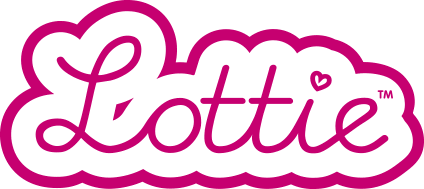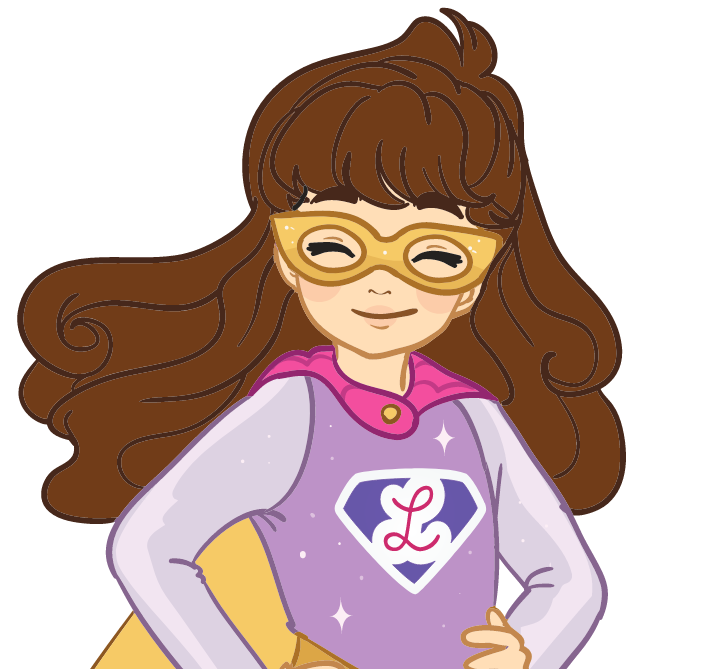It’s World Honeybee Day and what better time to launch our lovely Bee Yourself Outfit?!
Lottie Dolls HQ has just signed up to become a partner of the All-Ireland Pollinator Plan (AIPP) - which means we have promised to do our part to preserve bee habitats and contribute to their sustainability!

We spoke to the wonderful Professor Jane Stout of TCD, who was a co-author of the AIPP, to find out more about what she does, and what WE can do help save the bees!
Who are you?
My name is Professor Jane Stout, I am a Professor in Trinity College Dublin and a co-author of the All-Ireland Junior Pollinator Plan!

We at Lottie HQ are now a registered Business Partner of the AIPP, and we are dedicated to change some of our practices within our office, and around the ground of our offices in order to protect and preserve bee habitats!
What is your job?
I am a Professor in the School of Natural Sciences in Trinity College Dublin. I specialise in the field of ecology and study the interactions between different species and the environment in which they live. Broadly speaking, I’m interested understanding how biodiversity - the diversity of life on earth – and the interactions between elements of our biodiversity deliver benefits to humans. One of the interactions that I study is that between plants and animals that visit their flowers and act as pollinators.
As a Professor, I teach undergraduate Science students and postgraduate students studying for higher degrees (Masters and PhDs). I also lead research projects and mentor researchers, both in TCD and at other institutions. One of the projects I am involved in at the moment involves coordinating the pollination aspect of the “Birds, Bees and Butter” project in West Africa. In this project, we are trying to understand the interactions between land management, bird and insect diversity, and pollination of shea trees from which we derive shea butter, a valuable ingredient in the cosmetic and confectionary industry.
Other projects, based in Ireland, are looking at how agricultural practices affect pollinating insects and plant-pollinator interactions. In another project, I am working on understanding the economic value of pollination in Ireland. I am a member of the European COST Network SuperB, Chair of the Irish Forum on Natural Capital, and Deputy Chair of the All Ireland Pollinator Plan.

How are you involved in Bee Conservation?
I’ve been working on bees for the past 20 years – I started by studying bumblebee behaviour and what influences their foraging, and how they affect plant pollination and then moved on to broader issues of how human activities influence bees and other pollinating insects, the consequences for pollination of wild plant species and crops, and the conservation of pollinators. Because I was concerned about pollinator decline, I started working with my colleague Una Fitzpatrick at the National Biodiversity Data Centre to develop the All-Ireland Pollinator Plan. I am now the Deputy Chair of the Steering Group for the Plan, which has developed lots of activities to try and make Ireland a place where pollinators can survive and thrive.
What is the All Ireland Junior Pollinator Plan (AIPP)?
In 2015, lots of bee experts came together to create a plan to help save Ireland’s bee population! Without bees, Ireland would be a very dull place, with limited fruit, vegetables and flowers. The plan was created to help show everyone how important bees are, and what we can do to help them so they don’t disappear from Ireland forever!
Bee’s help during the process of Pollination – this is when they carry pollen from one flower to another, and it helps lots of plants to grow! Flowers can’t move, so the bees must help them with this process and without bees, we wouldn’t have any new flowers or plants growing. Plants also make extra pollen, because that’s what adult bees and their offspring eat for energy!

How to identify different types of bees?
Honeybees are the bees that produce honey to eat and they live in hives built by us. They even make enough honey to share with us too!
Bumblebees are most commonly recognised, they have fat, furry bodies and have black and yellow stripes. They do lots of hard work pollinating all the plants and flowers in your garden!
There are also many other species of solitary bees – they are typically smaller than honeybees and bumblebees, and often people don’t even realise they are bees. They don’t live in colonies but are also important pollinators.

How can kids and parents help with the conservation of bees?
It is very important that bees have lots of places they can live – in other words, their habitat. These habitats must be safe for them to live, and give them plenty of food. Bees live in all kinds of places – gardens, grassy-areas, woods/forests, parks, hedges, and even in sand – so next time you see a bee, don’t disturb him at his house 😊
Some things you can do to help:
- Plant flowers in your garden, or ask to plant flowers in a nearby park or at your school – this will attract bees and will give them plenty of food to eat and lots of work to do! Try to plant flowers that bloom from Spring until Autumn, this way all the bees can be happily fed all year round
- Grow some vegetables or fruit, for example, strawberries, raspberries or apples! The bees will be happy, and you, in return, will get some delicious fruit
- Ask your parents or at school if they can leave some patches of uncut, long grass in the garden – this will provide food for bees and shelter for solitary bees
- Create some nests for solitary bees at home or school – look up how to make solitary bee nest boxes to find instructions
- If you find a bee resting or hibernating, don’t disturb it – you wouldn’t like to take a break and be woken up by a stranger!
- Remind your friends and family that bees are not scary, and they will not harm you! If they are afraid, tell them about the great work they do, and they won’t seem scary anymore 😊
- Tell your friends about what you know about bees, and spread the message far and wide about what we can do to help!

Some More Facts About Bees!
- Bees would never attack humans unless they are scared, and only the girl bees can sting – just stay calm, let them fly away and you’ll be fine – she probably just thinks you’re a flower 😊
- Each bumblebee colony typically contains fewer than 200 individuals, whereas in honey bee colonies there can be up to 60,000 individuals
- Pollination involves the release of pollen from anthers, its transfer and deposition on stigmas – it is a key process in plant life cycles, meaning we need bees for plants to grow!
- Across the world, 87.5% of plant species are pollinated by animals
- Bees are essential for fruit production in apples and many berry crops in Ireland, yet one-third of wild bee species in Ireland are threatened with extinction

We want to say a huge thank you to Professor Jane Stout, Trinity College Dublin for providing us with such amazing information, and for her time!
Also thanks to Dr Úna FitzPatrick from the National Biodiversity Centre for allowing us to use the wonderful information from the AIPP, and to Dr Jim Carolan from Maynooth University, for his time, and putting us in contact with such a wonderful organisation!
For more information please visit the Biodiversity Ireland Pollinator Plan Website, the Green Schools Website and the Eco-Schools NI Website.

Our Bee Yourself Outfit Set is NOW AVAILABLE on Lottie.com ! This outfit fits on every doll within our range, and is the perfect addition to your Lottie, Finn & Friends collection!
Information Gathered From:
![]() Fast Shipping
Fast Shipping![]() Subscribe to our Newsletter
Subscribe to our Newsletter![]() 🌟 New Global Competition 🌟
🌟 New Global Competition 🌟



















